Ferratelle or Pizzelle, as everybody knows them in the US, are one of the most famous holiday desserts still made according to the ancient Abruzzo traditions.
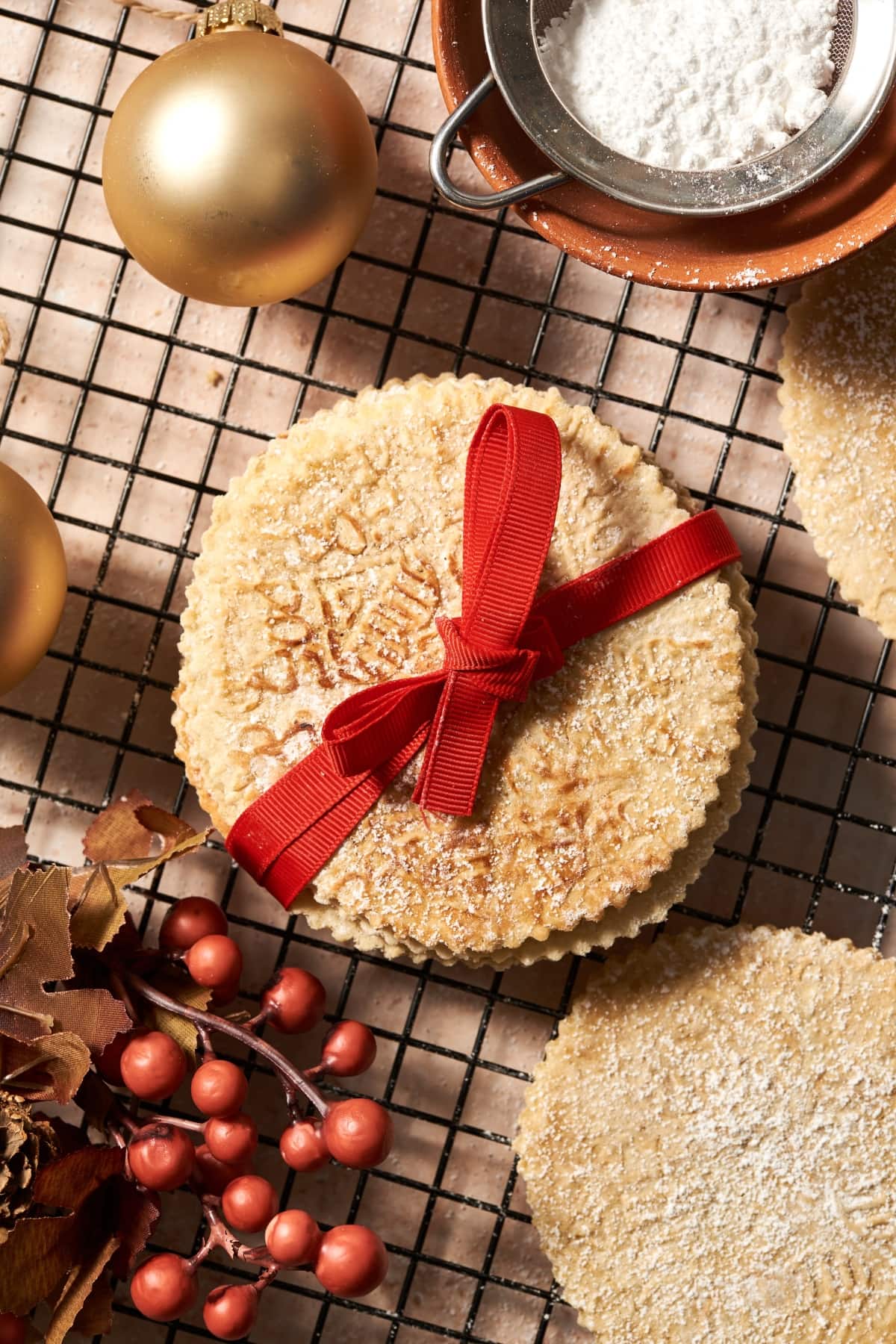
Mostly known as ferratelle in Italy, pizzelle are delicious waffles with an original shape that are cooked with a special iron tool. They are typical of the cuisine of Abruzzo, but also of Lazio and Molise. Because their name changes depending on the Italian region in which they are made, they are also known as neole, pizzelle, nuvole, cancelle or cancellate. Pizzelle are so ancient they even had an name in Roman times when they were called crustule.
Our classic pizzelle recipe has very simple ingredients: just flour, milk, oil, eggs, sugar and various flavorings. These ingredients are mixed to create a batter, then cooked on a pizzelle iron or cast iron plate that is heated on the stove or in an electric stand-alone pizzelle cooker.
The iron tool has an imprinted design pattern which gives the characteristic rhombus weave, the most widespread pattern used in Abruzzo. But in the US, everybody thinks of a pizzelle as a round-shaped waffle with a snowflake design. Either way, enjoy this good recipe you’ll want to try for your next bake sale.
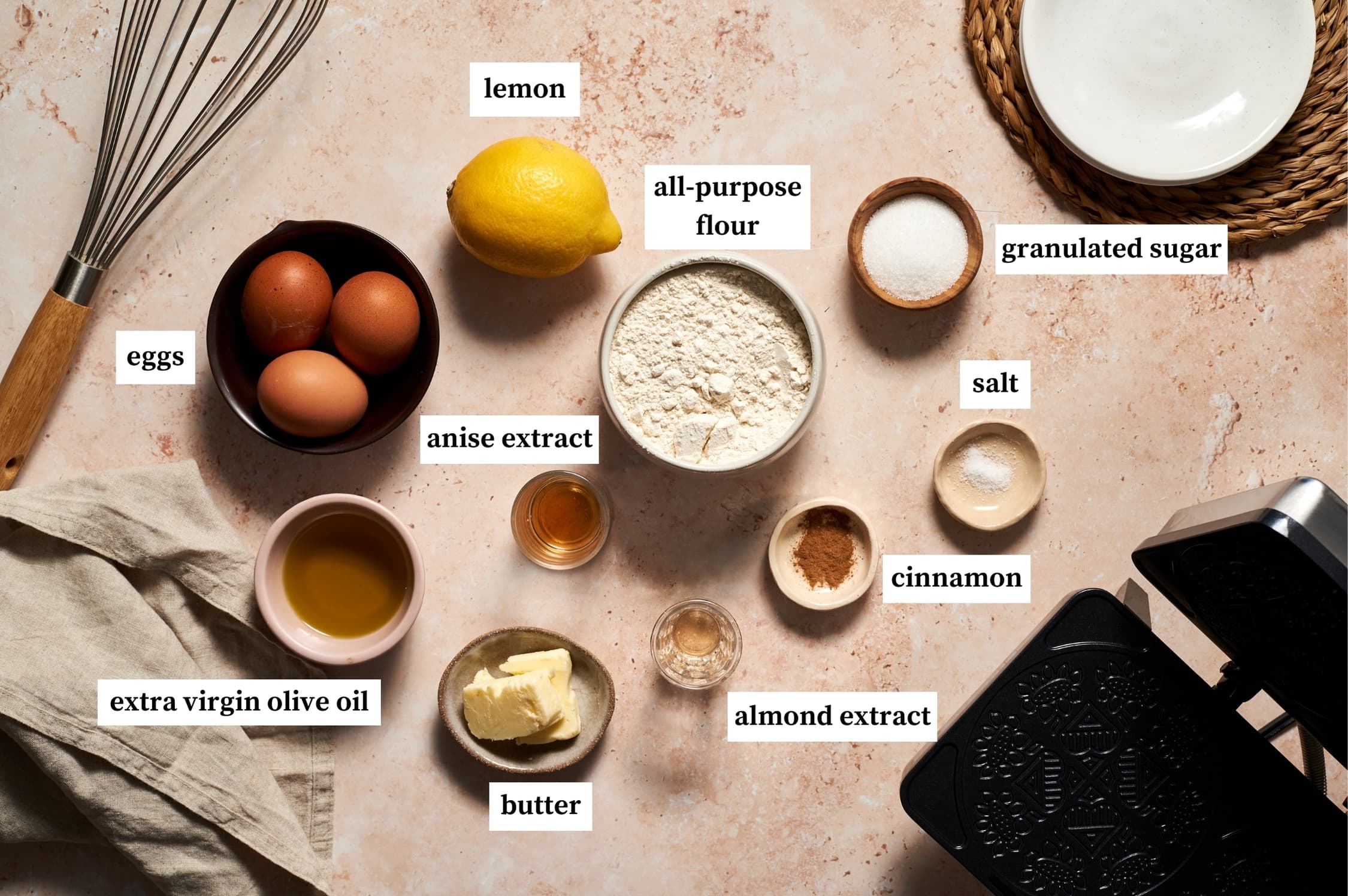
Make pizzelle batter: In a large bowl, add the eggs, the sifted flour with a pinch of salt, the sugar, and any of the optional flavorings you would like (photo 1). Either by hand with a whisk or with an electric mixer, mix the ingredients and then add the oil a little at a time. The mixture must appear thick and homogeneous, not too runny (photo 2). Let the batter rest for half an hour before moving on to the next step.
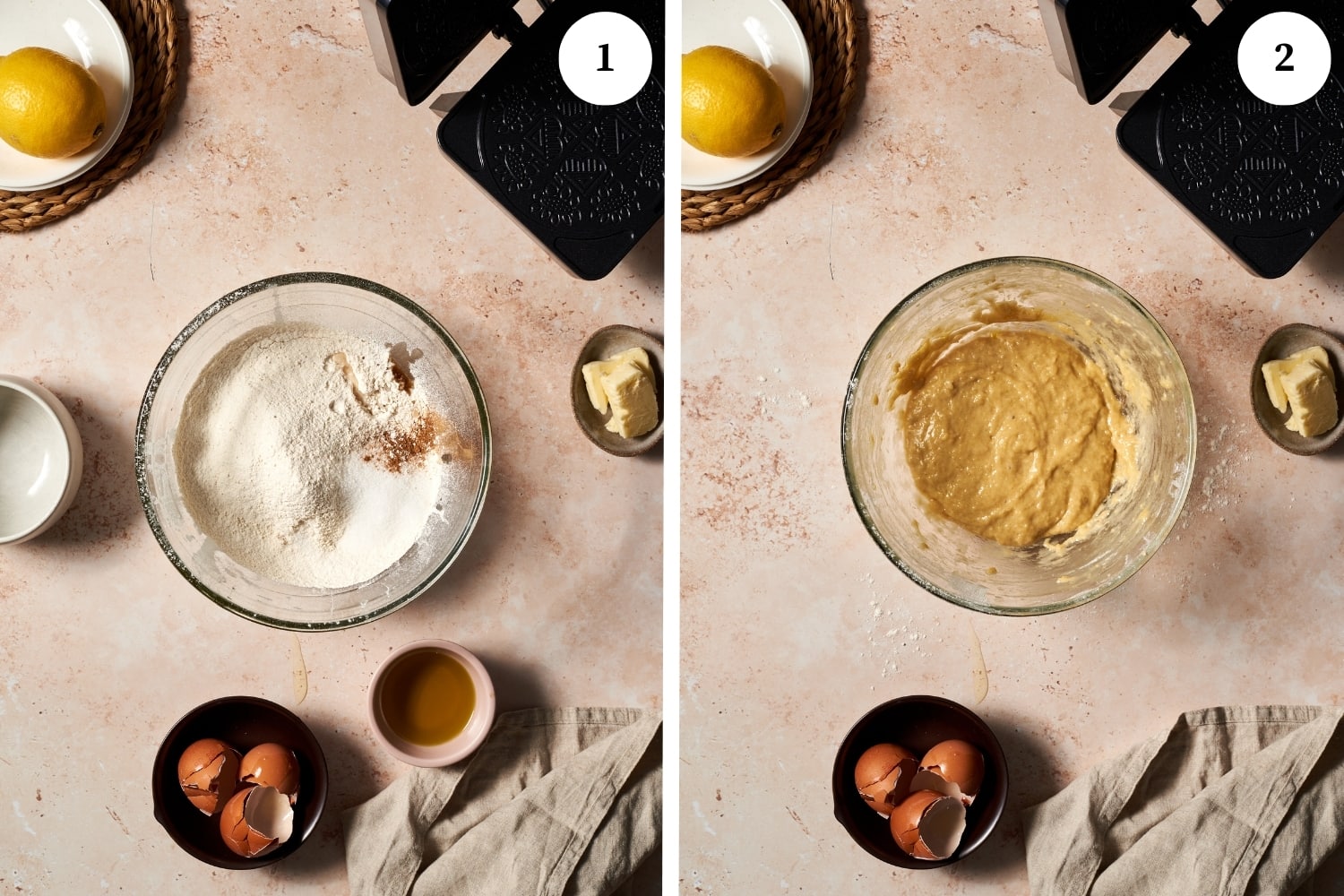
Cook the perfect pizzelle cookie: Lightly grease the pizzelle iron with a little butter (photo 3) (you can also use vegetable oil cooking spray if desired). Heat the iron on the stove (or follow the manufacturer’s instructions when using an electric pizzelle maker) and when it is hot and the butter has melted, pour a heaping spoonful of the dough into the center of the mold (photo 4).
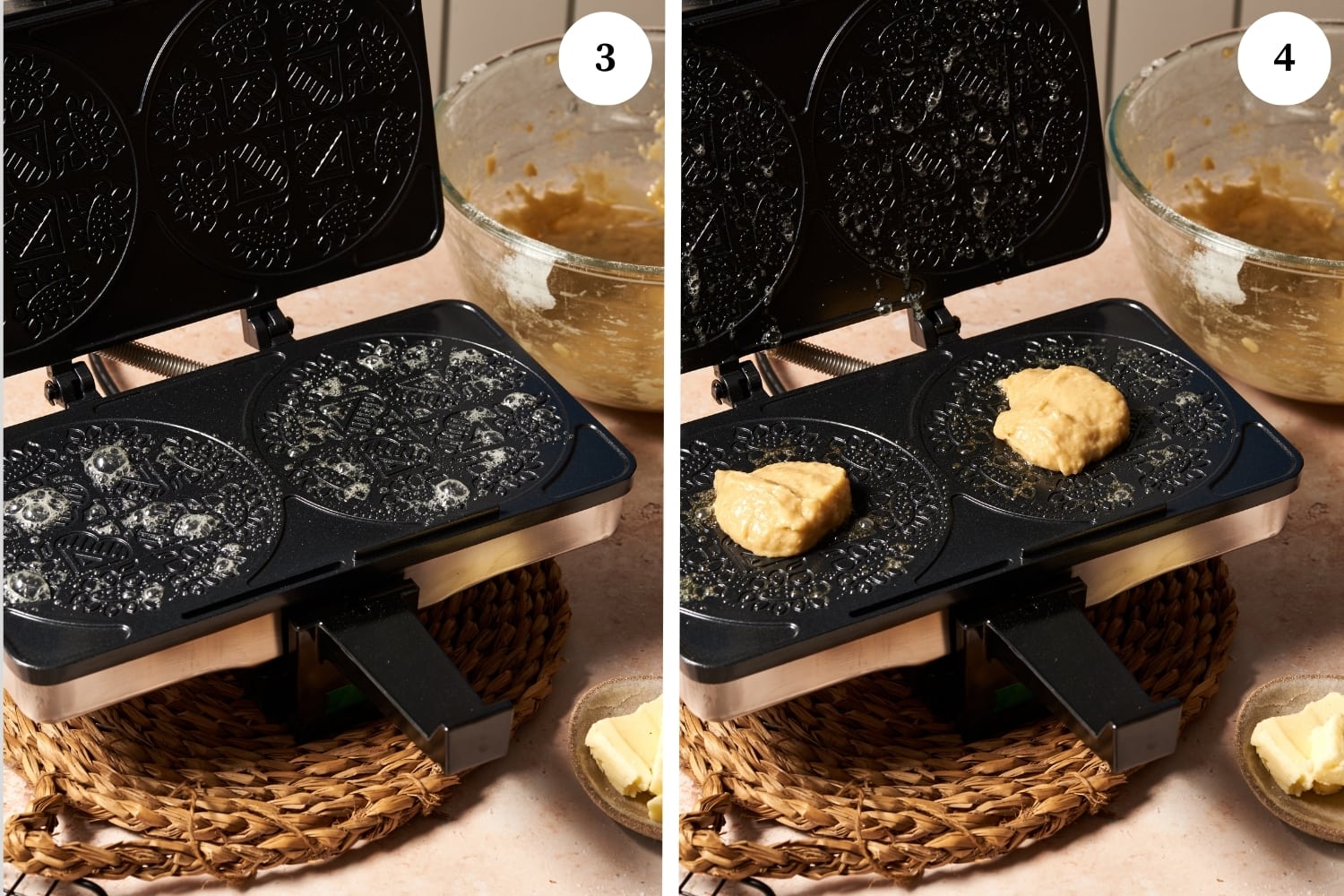
Close the pizzelle irons together and cook the pizzelle for 20-30 seconds oe until each side is golden brown and crispy (photo 5). If you want your pizzelles to be crispier, then you can leave a few more seconds on each side. Keep making pizzelle until all the remaining batter has been used.
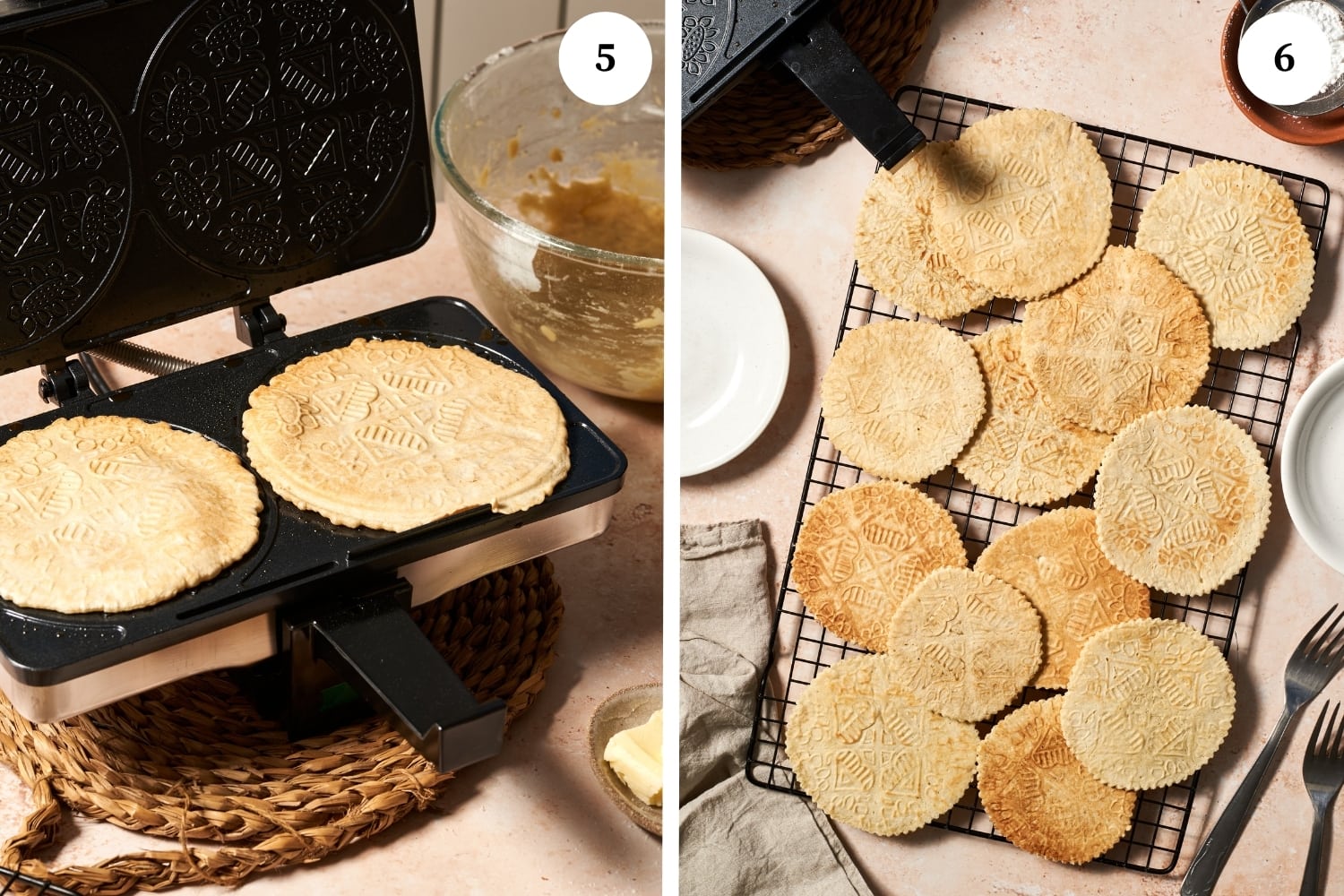
Top and serve: Remove each of the pizzelle cookies from the pizzelle iron with the help of a fork or other utensil and put aside on a wire rack lined with a paper towel (photo 6). Each pizzelle can be enjoyed by itself or sweetened with powdered sugar, jam, chocolate spread or even whipped cream.
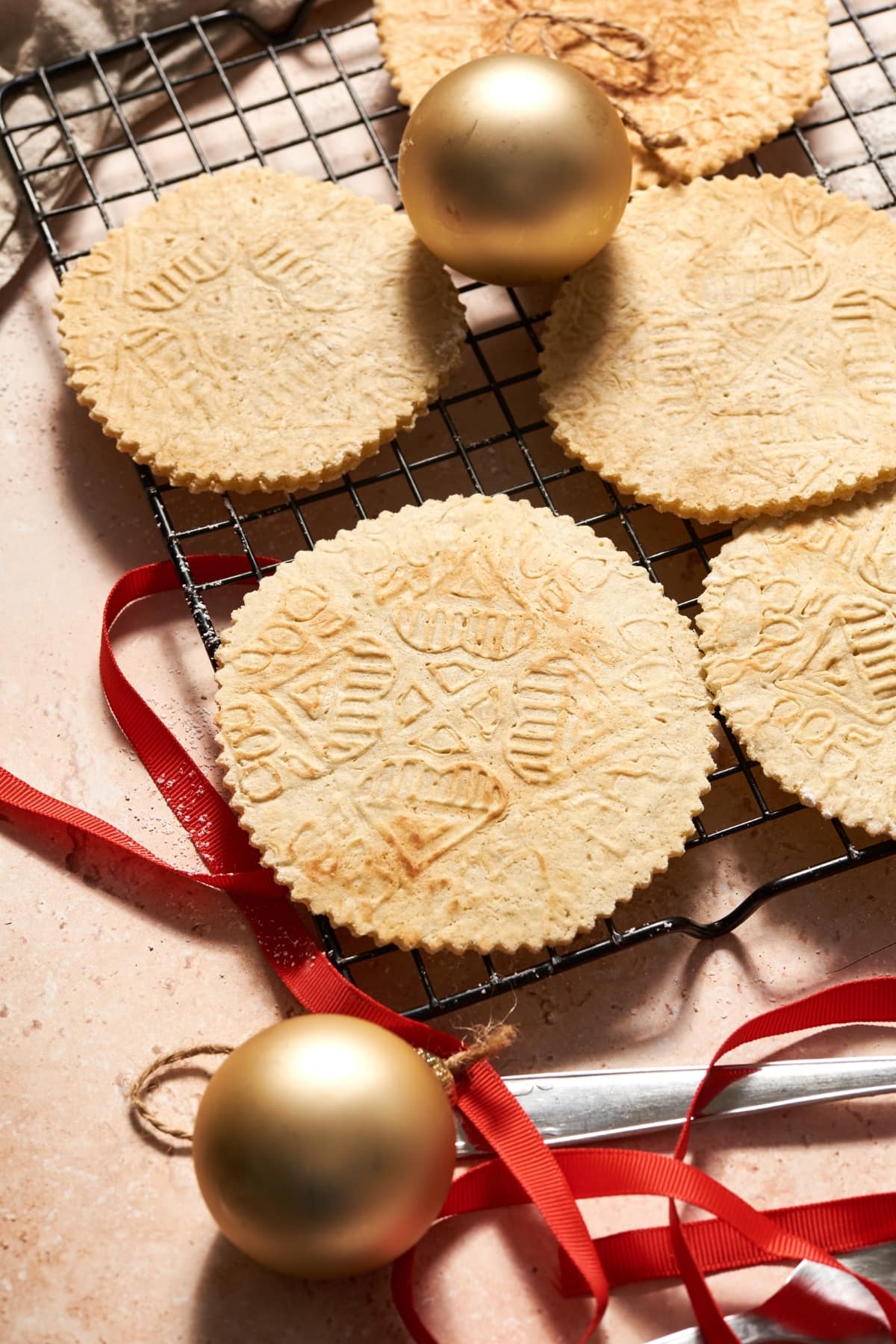
You should leave the pizzelles on wire cooling racks to cool completely. Then store them in an airtight container for up to 7 days. You can also freeze them in a ziploc bag for up to two weeks or more.
What makes all the difference when making pizzelles is using high-quality ingredients, letting the pizzelle dough rest for half an hour, and lastly making sure the pizzelle irons are hot and well greased before adding the batter for these Italian waffle cookies.
According to tradition in Abruzzo, the right cooking time of the waffle cookies should be calculated by reciting a prayer while cooking each side of the pizzelle: the time of a “Hail Mary” on one side and of “Our Father” on the other will ensure the perfect pizzelle that’s light and crispy.
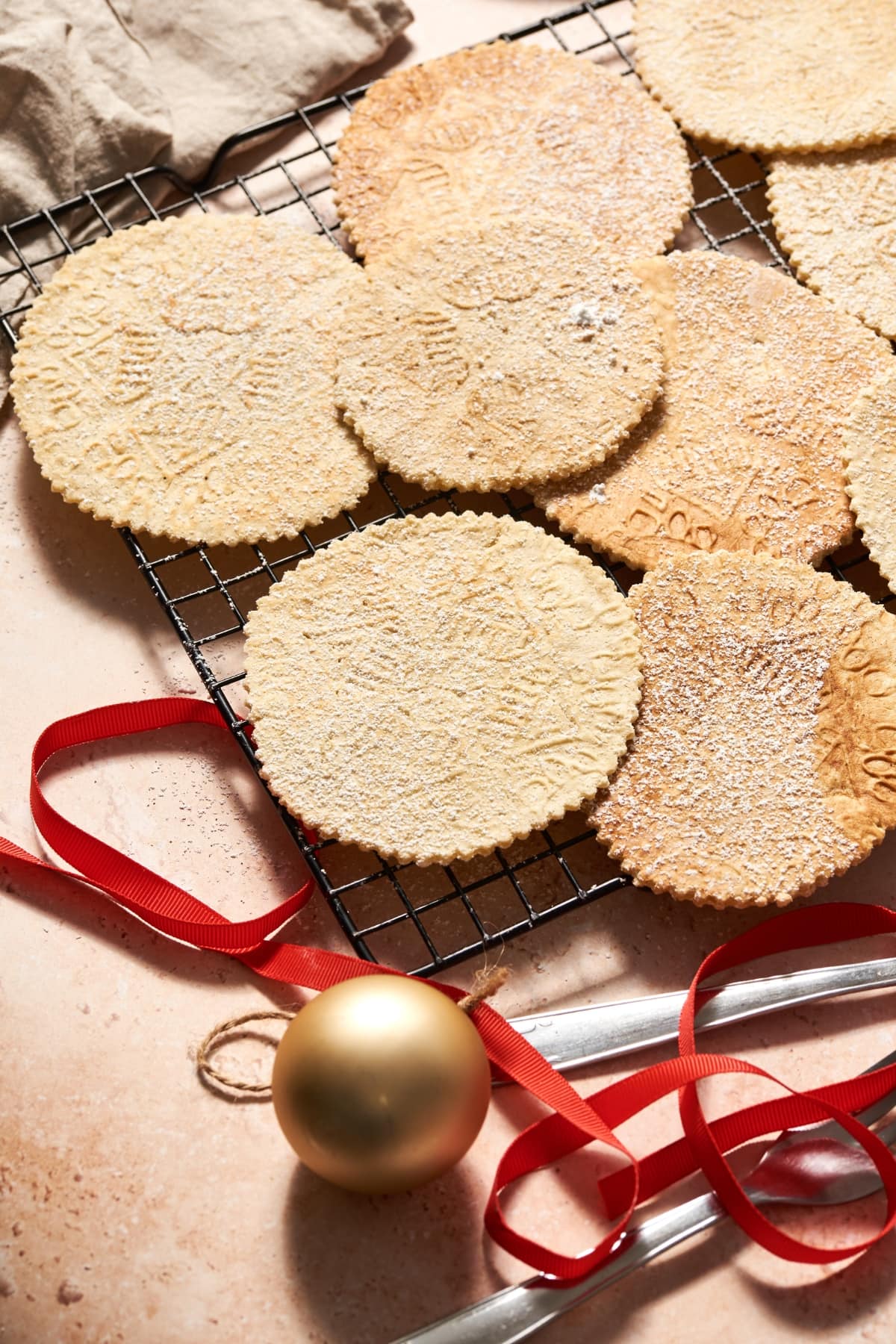
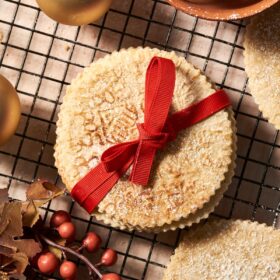
More recipes for other Christmas Italian desserts:
An Italian historian who lived in the nineteenth century, Giuseppe Tassini, mentions ferratelle (i.e. pizzelle cookies) in his masterpiece “Curiosità Veneziane – Ovvero: Origini delle denominazioni stradali di Venezia“, also calling them inferriate or scalette for the similarity of how these treats look to windows and stairs.
It seems that the origin of this pizzelles recipe can be traced back to a distant era, as the ancient Romans used to prepare an Italian waffle dessert called crustulum with almost the exact same ingredients as the classic pizzelle recipe we use today.
However, the iron plates used to cook the ferratelle only began to appear around the 1700s. These iron tools, with double plates and handles, were forged by blacksmiths commissioned by brides from rich families in Abruzzo, who would request the plates be engraved with the coat of arms of the family or their initials. “Lu ferre” irons were in fact included as part of young womens’ dowries.
Today Ferratelle (pizzelle cookies) can be seen filling the window displays of Abruzzo’s pastry shops, but in the past they were considered “party sweets” to be prepared during the Easter week or during the celebrations of the patron saint, as sign of respect and devotion.
Many Italians who immigrated to the US also brought their own classic pizzelle recipe with them. This traditional cookie is in fact one of the most prepared recipes during the Christmas season today in Italian-American homes.
The true home of pizzelles is Abruzzo, but they can be found in many other Italian regions. For example, in Molise these sweets were served at least until the 60s during weddings and have always been known as “cancelle,” a name that alludes to the grooves that look like a gate.
Even in a one area of Lazio, the district of Cittaducale which is a former territory of Abruzzo, it is tradition to prepare these confectionery specialties. Here the pizzelle have even attained a PAT status which recognizes them as a traditional agro-food product from the area.
Excellent, thank you so much for helping learn how to make Pizzelles. I had to modify it a bit with gluten free flours and egg beaters. They are delicious, thank you very much.
Grazie mille Lee! If you can, I’d love to know your ratios using gluten free flour. Ciao!
The Real Person!
The Real Person!
I would also like the gluten free recipe for my grandchildren.
Grazie!